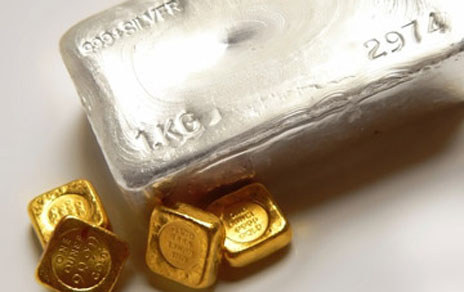 (Kitco News) – The gold market is at a discount to fair value; however, as long as the Federal Reserve continues aggressively tightening its monetary policy, investors are expected to remain on the sidelines, according to one market analyst.
(Kitco News) – The gold market is at a discount to fair value; however, as long as the Federal Reserve continues aggressively tightening its monetary policy, investors are expected to remain on the sidelines, according to one market analyst.
In an interview with Kitco News, Huw Roberts, Head of Analytics at Quant Insight, said that while gold appears cheap compared to its fair value, macroeconomic conditions don’t support a new uptrend anytime soon.
He added that under QI’s modeling, gold’s fair value should be around $1,791 an ounce. The comments come as gold struggles to find new bullish momentum even as it holds long-term support above $1,730 an ounce. August gold futures last traded at $1,734.60 an ounce, down 0.41% on the day.
Roberts explained that QI evaluates gold’s fair value model based on, in very broad terms, economic growth, inflation, financial conditions, including real yields, yield curve and credit spreads, the monetary policy environment, and risk appetite.
Roberts added that the QI models show macroeconomic fundamentals are breaking down for gold, which could point to further weakness in the near term. He said investors using QI modeling are waiting for the macro picture to at least stabilize before buying the current dip.
“Although the model shows that gold is cheap, we don’t actually have a strong buy signal at the moment,” he said. “From a pure QI perspective. We want the macro model value to turn higher.”
As to what could turn the tide for gold, Roberts said that the model suggests there needs to be a shift in the trend in interest rates. Roberts noted that they had highlighted 16 factors that can influence the price of gold; however, the most significant factor driving the market remains inflation. Inflation accounts for more than 18% of gold’s fair value, according to research from QI.
Although inflation is at its highest level in 40 years, real yields are rising. At the same time, breakeven levels, the difference between nominal and real yields, are falling as recession fears increase.
“Breakevens are coming lower, while the market’s getting worried about a recession and falling inflation and until those factors turn around or just stabilize, then our model value isn’t going to stabilize,” he said.
Recession fears have grown in recent days as the market prepares for another extraordinary rate hike from Federal Reserve. Markets expect the U.S. central bank to raise the Federal Funds rate by another 75 basis points at the end of the month.
But it’s not just gold that has dropped below its fair value. Roberts said that silver could be a slightly more interesting asset to watch in the near term.
According to QI’s modeling, silver is about a half standard deviation below its fair value, more than gold but still not enough to trigger a buy signal. Roberts said he watches assets at least one standard deviation from fair value.
QI’s modeling sees silver prices about 7% below fair value. Silver has seen a much sharper drop compared to gold. The gold/silver ratio is currently at its highest level in two years at 90.58 points. September silver futures last traded at $19.155 an ounce, down 0.42% on the day.
What makes silver slightly more exciting compared to gold is that QI’s model shows that the metal’s maco-fundamentals appear to be bottoming and turning higher.
“It’s still early, and we wouldn’t get excited until the macro picture made a new high confirming a bottom, but silver is one asset to watch,” he said.
The asset that Quant Insights is watching closely is copper. The industrial metal has taken a significant bruising as recession fears have increased. Slower economic growth would lead to less demand for copper. Copper prices are trading roughly at a 1.5-year low below $3.50 a pound.
Roberts said that according to QI’s modeling, copper is four standard deviations away from fair value. He added that the copper market has only been this oversold four times in the last 14.5 years.
“If we’re not at the bottom, we’re probably quite close,” he said.
Shared by Golden State Mint on GoldenStateMint.com

















